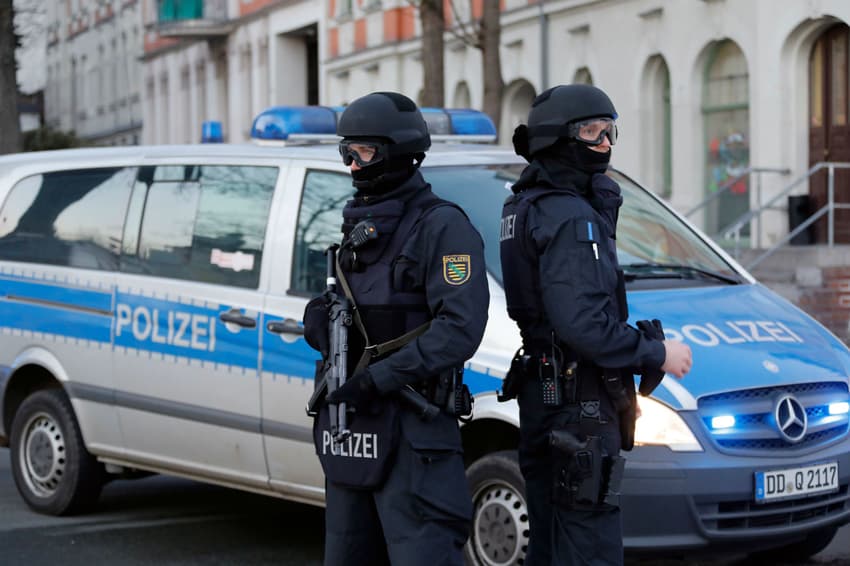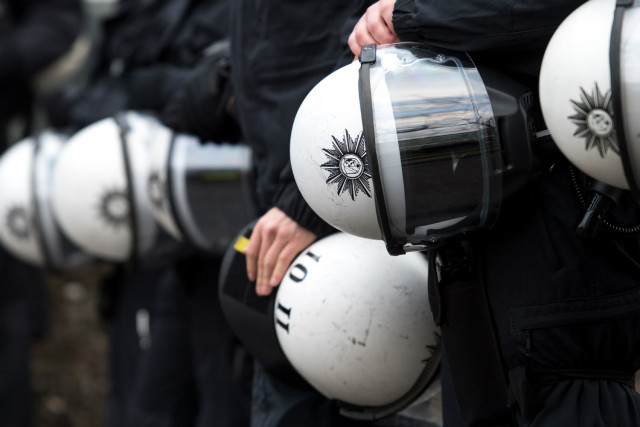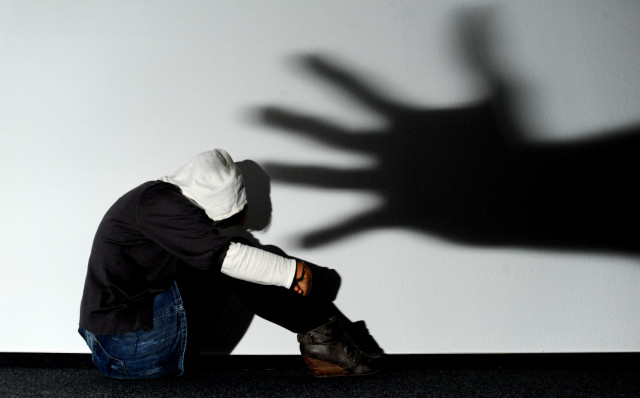What we learned from this year’s crime statistics… and what we didn’t

The national crime statistics published on Tuesday indicated a dramatic drop in crime levels. At the same time, the general public think that Germany is becoming less safe. So where does the truth lie?
Reported crime has dropped drastically
Thanks to a leak of the National Crime Statistics (PKS) back in April we already knew what the headline number from the crime statistics would be: reported crime dropped by 10 percent last year. That was the biggest decrease in overall crime in a quarter century, quite a spectacular turnaround after the statistics showed an increase in crime in recent years.
While overall crime sank to the lowest level since 1992, if you take population growth into account, it is actually the lowest crime rate in 30 years.
If you take the statistics at face value, for every 100,000 German citizens, less than 7,000 crimes were reported last year. By way of comparison, in 2005 some 7,622 crimes were reported for every 100,000 people in Germany.
FOR MEMBERS: Is Frankfurt really Germany's most dangerous city? Not so fast!
It’s not just about illegal border crossings
A major reason for the higher crime rate in 2015 and 2016 was actually intentional government policy. When Angela Merkel opened the country’s borders to refugees in 2015, the hundreds of thousands of people who streamed into the country without official papers were technically committing a crime.
This led to a big bump in overall reported crime in both years, as the PKS statistics included illegal border crossings. When immigration infringements were taken out of the figures for 2016, crime actual dropped.
Because refugee arrivals had already slowed to a trickle by 2017, anything but a drop in overall crime would have been a big surprise.
But the fall in recorded crime is about much more than just border crossings.
Burglaries dropped by 23 percent last year. That follow a 10 percent drop in break-ins in 2016 and signals a major success for public awareness campaigns after an all time high in 2015.
The surge in break-ins that year led police to create a website to inform people on how to better secure their homes, for example by installing shutters and better locking systems.
The Interior Ministry could also report positive news on violent crime, which dropped by 2.4 percent. Nonetheless, that does not reverse a 6.7 percent jump in violent crime recorded in 2016.
A turn around in political crime
 Photo: DPA
Photo: DPA
For the first time since 2012, the Interior Ministry reported a drop in politically motivated crime for last year.
Roughly 40,000 such crimes were recorded in 2017, marking a 4.9 percent decline. More than half of these crimes were believed to have a right-wing motive behind them.
The figures for violent political crime were even more encouraging - dropping by 13 percent to 3,754 reported incidents.
Part of the reason for the fall in political crime is to be found in the refugee crisis passing its zenith. As the number of migrants arriving in Germany has fallen, the number of attacks on asylum centres has also dropped off.
Nonetheless, it wasn’t all good news in the category of political crime, which also includes “hate crimes” like racial abuse.
Anti-Semitic crime rose by 2.5 percent in comparison with 2016. The vast majority (95 percent) of these crimes were reportedly carried out by the far-right. But how this particular statistic is recorded has been heavily criticized due to the fact that any swastikas sprayed on a wall is automatically attributed to the far-right.
What the statistics don’t tell us
The interesting thing about crime in Germany today is that, while the authorities claim crime is going down, the public say they feel less secure. A survey in March indicated that 44 percent of Germans think that the country is less safe now than it was in years gone by.
The explanation for this could have little to do with actual crime levels. Arguably, media reports on the migrant crisis and heated rhetoric by the anti-Islam Alternative for Germany party have created an exaggerated fear of the danger posed by over a million migrants who arrived in the country in 2015 and 2016.
But there are also significant holes in the official statistics which bring their validity as a true measure of crime into question.
Not a complete record
The Federal Investigations Office (BKA), which published the statistics, indicates on its own website that there are certain types of illegal behaviour that are not included in the statistics. For instance, traffic infringements aren't there, nor are terrorism-related offences, which are dealt with by the Staatsschutz (state security).
Der Spiegel journalist Jörg Diehl reports that roughly 20 percent of all known crime is not recorded in the annual police report.
“The federal prosecution service, which only deals with certain terror investigations, saw a rise in its extremism investigations from 68 in 2013 to 1,200 in 2017,” Diehl writes.
The Dunkelfeld
 Photo: DPA
Photo: DPA
The BKA also stresses on its website that the statistics only cover reported crime. Essentially, if police don't know that a crime happened then they can't report it in their statistics. This unknown crime is called the Dunkelfeld (literally: dark field).
“There are some types of crime like theft where we have a pretty low Dunkelfeld. That’s because, if you have something stolen you report it for insurance reasons,” a BKA spokesperson told DPA.
But for many other types of crime, the Dunkelfeld is much, much higher.
In the field of narcotics for instance, crime is only discovered when police catch someone in possession of a banned substance. Every time someone sells marijuana or cocaine and the transaction is not discovered, a crime is committed that does not appear in the statistics.
“The criminal statistics only give an approximation in this area,” the BKA spokesperson said.
In fact, studies indicate that the Dunkefeld is so high for certain types of crime that the police only know about a tiny proportion of cases.
A survey conducted by the state police in Lower Saxony last year, in which members of the public were asked inf they had been a victim of crime during the year, indicated that 93 percent of sexual offences are not reported and only 12 percent of hate crimes are reported.
Meanwhile, a study from the late 1990s suggests that every second murder in Germany is never discovered, because the official postmortem wrongly ascribed it to natural causes.
“The statistics are only a small snippet of what crimes were actually committed and it only shows what police did, not what developed further with prosecutors,” Ruhr-University Bochum criminology professor Tobias Singelnstein told The Local last year.
“They are not statistics so much about criminality, but rather they are statistics on police behaviour, or how the police operated in the past year.
“What segment of crime is shown depends on how the police operated, and in particular on the reports from the population. It also reflects how the reporting behaviour of the public may have changed.”
The German Police Union has therefore called for the government to publish security reports rather than raw police statistics. The reports would include survey results and thus give a more realistic picture of developments in actual crime, the police union claims.
FOR MEMBERS: What crimes are committed in Germany and where is criminality most common?
Comments
See Also
Reported crime has dropped drastically
Thanks to a leak of the National Crime Statistics (PKS) back in April we already knew what the headline number from the crime statistics would be: reported crime dropped by 10 percent last year. That was the biggest decrease in overall crime in a quarter century, quite a spectacular turnaround after the statistics showed an increase in crime in recent years.
While overall crime sank to the lowest level since 1992, if you take population growth into account, it is actually the lowest crime rate in 30 years.
If you take the statistics at face value, for every 100,000 German citizens, less than 7,000 crimes were reported last year. By way of comparison, in 2005 some 7,622 crimes were reported for every 100,000 people in Germany.
FOR MEMBERS: Is Frankfurt really Germany's most dangerous city? Not so fast!
It’s not just about illegal border crossings
A major reason for the higher crime rate in 2015 and 2016 was actually intentional government policy. When Angela Merkel opened the country’s borders to refugees in 2015, the hundreds of thousands of people who streamed into the country without official papers were technically committing a crime.
This led to a big bump in overall reported crime in both years, as the PKS statistics included illegal border crossings. When immigration infringements were taken out of the figures for 2016, crime actual dropped.
Because refugee arrivals had already slowed to a trickle by 2017, anything but a drop in overall crime would have been a big surprise.
But the fall in recorded crime is about much more than just border crossings.
Burglaries dropped by 23 percent last year. That follow a 10 percent drop in break-ins in 2016 and signals a major success for public awareness campaigns after an all time high in 2015.
The surge in break-ins that year led police to create a website to inform people on how to better secure their homes, for example by installing shutters and better locking systems.
The Interior Ministry could also report positive news on violent crime, which dropped by 2.4 percent. Nonetheless, that does not reverse a 6.7 percent jump in violent crime recorded in 2016.
A turn around in political crime
 Photo: DPA
Photo: DPA
For the first time since 2012, the Interior Ministry reported a drop in politically motivated crime for last year.
Roughly 40,000 such crimes were recorded in 2017, marking a 4.9 percent decline. More than half of these crimes were believed to have a right-wing motive behind them.
The figures for violent political crime were even more encouraging - dropping by 13 percent to 3,754 reported incidents.
Part of the reason for the fall in political crime is to be found in the refugee crisis passing its zenith. As the number of migrants arriving in Germany has fallen, the number of attacks on asylum centres has also dropped off.
Nonetheless, it wasn’t all good news in the category of political crime, which also includes “hate crimes” like racial abuse.
Anti-Semitic crime rose by 2.5 percent in comparison with 2016. The vast majority (95 percent) of these crimes were reportedly carried out by the far-right. But how this particular statistic is recorded has been heavily criticized due to the fact that any swastikas sprayed on a wall is automatically attributed to the far-right.
What the statistics don’t tell us
The interesting thing about crime in Germany today is that, while the authorities claim crime is going down, the public say they feel less secure. A survey in March indicated that 44 percent of Germans think that the country is less safe now than it was in years gone by.
The explanation for this could have little to do with actual crime levels. Arguably, media reports on the migrant crisis and heated rhetoric by the anti-Islam Alternative for Germany party have created an exaggerated fear of the danger posed by over a million migrants who arrived in the country in 2015 and 2016.
But there are also significant holes in the official statistics which bring their validity as a true measure of crime into question.
Not a complete record
The Federal Investigations Office (BKA), which published the statistics, indicates on its own website that there are certain types of illegal behaviour that are not included in the statistics. For instance, traffic infringements aren't there, nor are terrorism-related offences, which are dealt with by the Staatsschutz (state security).
Der Spiegel journalist Jörg Diehl reports that roughly 20 percent of all known crime is not recorded in the annual police report.
“The federal prosecution service, which only deals with certain terror investigations, saw a rise in its extremism investigations from 68 in 2013 to 1,200 in 2017,” Diehl writes.
The Dunkelfeld
 Photo: DPA
Photo: DPA
The BKA also stresses on its website that the statistics only cover reported crime. Essentially, if police don't know that a crime happened then they can't report it in their statistics. This unknown crime is called the Dunkelfeld (literally: dark field).
“There are some types of crime like theft where we have a pretty low Dunkelfeld. That’s because, if you have something stolen you report it for insurance reasons,” a BKA spokesperson told DPA.
But for many other types of crime, the Dunkelfeld is much, much higher.
In the field of narcotics for instance, crime is only discovered when police catch someone in possession of a banned substance. Every time someone sells marijuana or cocaine and the transaction is not discovered, a crime is committed that does not appear in the statistics.
“The criminal statistics only give an approximation in this area,” the BKA spokesperson said.
In fact, studies indicate that the Dunkefeld is so high for certain types of crime that the police only know about a tiny proportion of cases.
A survey conducted by the state police in Lower Saxony last year, in which members of the public were asked inf they had been a victim of crime during the year, indicated that 93 percent of sexual offences are not reported and only 12 percent of hate crimes are reported.
Meanwhile, a study from the late 1990s suggests that every second murder in Germany is never discovered, because the official postmortem wrongly ascribed it to natural causes.
“The statistics are only a small snippet of what crimes were actually committed and it only shows what police did, not what developed further with prosecutors,” Ruhr-University Bochum criminology professor Tobias Singelnstein told The Local last year.
“They are not statistics so much about criminality, but rather they are statistics on police behaviour, or how the police operated in the past year.
“What segment of crime is shown depends on how the police operated, and in particular on the reports from the population. It also reflects how the reporting behaviour of the public may have changed.”
The German Police Union has therefore called for the government to publish security reports rather than raw police statistics. The reports would include survey results and thus give a more realistic picture of developments in actual crime, the police union claims.
FOR MEMBERS: What crimes are committed in Germany and where is criminality most common?
Join the conversation in our comments section below. Share your own views and experience and if you have a question or suggestion for our journalists then email us at [email protected].
Please keep comments civil, constructive and on topic – and make sure to read our terms of use before getting involved.
Please log in here to leave a comment.